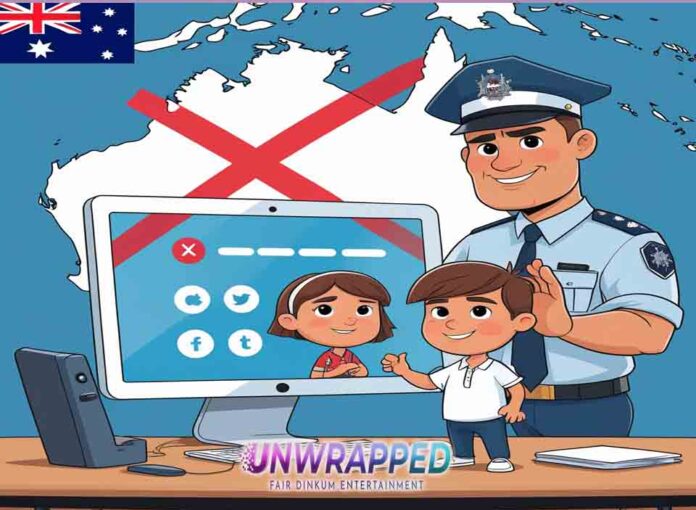From 10 December 2025, “age-restricted” social media platforms must take reasonable steps to prevent Australians under 16 from having accounts. This is an obligation on platforms—not on kids or parents—with multi-million-dollar fines for non-compliance.
Quick facts (at a glance)
Start date: 10 December 2025 for social media platforms.
Who’s restricted: Australians under 16 (no parental override).
Who gets fined: Platforms—not kids or parents. Maximum penalties can reach roughly A$49.5m for serious or systemic breaches.
Will you be forced to upload government ID? No. Privacy guidance says platforms must offer other methods and must not pressure people to use government-issued ID (including Digital ID).
Other services: Additional age-assurance duties begin 27 Dec 2025 (some sectors) and 9 Mar 2026 (others) under the Phase 2 Online Safety Codes.
What exactly changes on 10 December 2025?
The Social Media Minimum Age (SMMA) framework requires designated “age-restricted social media platforms” to stop under-16s from creating or keeping accounts. The law puts the onus on platforms to take “reasonable steps”—not on families—so there are no penalties for under-16s or parents.
Key point: This is a delay to accounts, not a criminal “ban” on viewing content. The regulator frames it as platform responsibilities—not punishment for teens.
See Also: Ray-Ban Meta Display Prompts Mega-Guide
Which apps are affected?
The list of regulated platforms is being finalized and updated by government and the eSafety Commissioner. Expect the major platforms (e.g., TikTok, Instagram, Snapchat, Facebook, X, Reddit, and likely YouTube). Always check the latest official list as services and designations can change.
How will platforms check ages (without forcing ID)?
Privacy guidance states platforms cannot coerce users to provide government-issued ID (including Digital ID) to prove age. They must offer alternatives, which could include: device-based checks, AI signals, account history, payment/consent tokens, or third-party age-assurance providers with strict privacy controls. Exact methods will vary by platform.
Expect prompts, in-app reviews, and periodic checks rather than universal ID upload.
Penalties & enforcement
Platforms that fail to take reasonable steps can face fines up to around A$49.5 million for serious/systemic non-compliance.
Authorities discourage blanket ID checks for everyone; “reasonable steps” should prioritize privacy-preserving methods.
Major providers have flagged enforcement challenges, but the requirement to deactivate under-16 accounts by the start date still stands.
Timeline you can bookmark
Now → 9 Dec 2025
Platforms prepare enforcement flows. Parents/teens should review account birthdays and download important data if needed. Government continues publishing guidance.
10 Dec 2025
SMMA “go-live” for social media accounts: platforms expected to block under-16 accounts and prevent new sign-ups.
27 Dec 2025 / 9 Mar 2026
Separate Phase 2 Online Safety Codes take effect across search, hosting, carriage (Dec 27), then remaining sectors (Mar 9), bringing broader age-assurance duties and penalties.
What parents & teens should do (step-by-step)
Check age settings now
Teens turning 16 soon should ensure account birthdays are accurate to avoid wrongful removal.
Export important data
Back up photos, messages, and contacts in case an account is locked and needs appeal after your 16th birthday.
Prepare for in-app prompts
Expect age checks using non-ID methods. Decline any prompts that pressure you to use government ID—platforms must offer other options.
Appeal if you’re 16+ and get caught in the net
Use in-app appeal routes or alternative age-assurance choices (e.g., privacy-preserving checks). Follow official guidance to correct mistakes.
Parents: common myths vs facts
“It’s a criminal ban for kids.”
No. It’s a platform obligation. No penalties apply to kids or parents; the regulator targets platforms that fail to take reasonable steps.
“We’ll all be forced to upload passports or Digital ID.”
No. Platforms must not pressure users to provide government ID and must offer alternative methods.
“Search engines aren’t affected.”
They are—under a separate regime (Phase 2 Codes) starting 27 Dec 2025 for some services, and 9 Mar 2026 for others—so expect more age-assurance prompts across the web.
For platforms & publishers (dev/ops checklist)
Map “reasonable steps” across sign-up, sign-in, and re-auth journeys (no government-ID coercion; provide alternatives).
Log audit trails of age-assurance decisions (privacy-by-default, data minimisation).
Coordinate with Phase 2 Code obligations if you also operate search/hosting/carriage services—deadlines differ.
The broader context (why this is happening)
Government cites research on adolescent harm and platform design; policymakers argue 16 is a defensible threshold for account access while privacy regulators insist on safer, privacy-preserving verification. Industry warns enforcement is complex and risks over-blocking. Expect a noisy first quarter of 2026 as appeals and edge cases surge.
Frequently asked questions
When exactly does the law start?
10 December 2025 for social media platforms. Separate Phase 2 Codes start 27 Dec 2025 (some sectors) and 9 Mar 2026 (others).
Is this a total ban on social media for kids?
No. It’s a requirement for platforms to block under-16 accounts. Viewing public content may still occur via the open web or guardian accounts; penalties target platforms, not families.
Will I need to show my driver’s licence or Digital ID?
No. Platforms cannot pressure users to use government-issued ID and must provide other age-assurance methods.
Which apps are covered?
The list is evolving; major platforms are included (including YouTube, subject to final designation). Check official updates for the final roster.
What are the fines?
Up to roughly A$49.5 million for serious or systemic non-compliance.
People Also Love: Best Boneless Couches of 2025: Sag, Stain & Pet-Scratch Results (Hands-On Buyer’s Guide)










